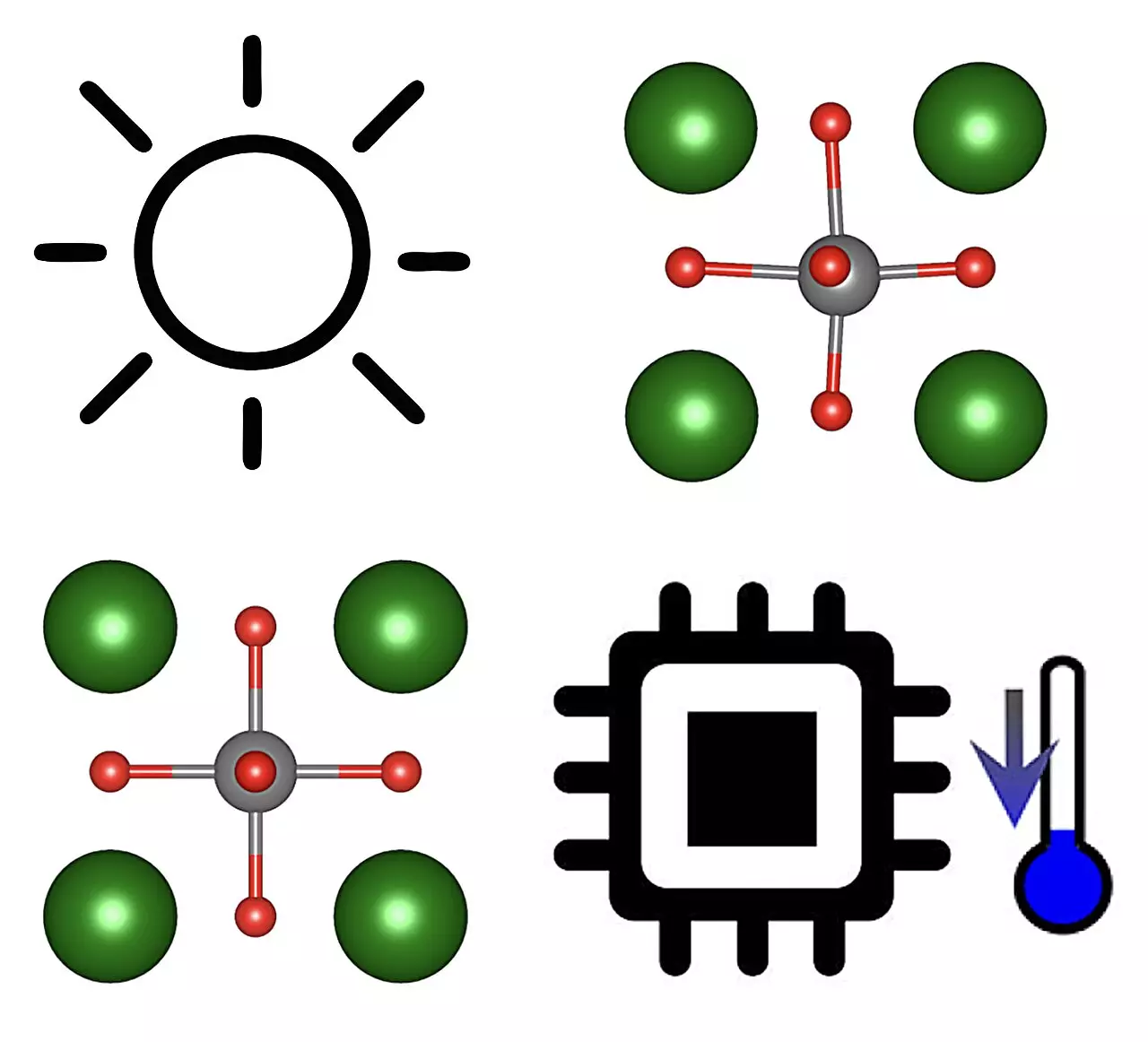The quest for more sustainable and efficient cooling technologies has led researchers to explore solid-state cooling systems. Unlike traditional refrigeration methods that utilize gases or liquids—a process often accompanied by harmful emissions—solid-state cooling harnesses the inherent properties of solid materials. This innovative approach promises not only to reduce energy consumption but also to diminish greenhouse gas emissions associated with conventional refrigeration techniques. Despite its potential, the implementation of caloric effects in real-world applications has been limited by specific temperature ranges and operational requirements. Recent studies suggest a new frontier in solid-state cooling, one that leverages advances in materials science to overcome these barriers.
Researchers from the Institut de Ciència de Materials de Barcelona and Universitat Politècnica de Catalunya have proposed a revolutionary solution to the challenges plaguing existing solid-state cooling systems. Their study, recently published in Physical Review Letters, unveils the potential of photocaloric (PC) effects in ferroelectric perovskites. The research indicates that these effects can operate over a significantly broader temperature spectrum compared to traditional caloric materials, paving the way for groundbreaking applications in thermal management.
The inspiration behind this research originates from established principles within material science. The co-author Claudio Cazorla highlighted the dual sources of their concept: the well-known ability of ferroelectric materials to undergo phase transitions upon exposure to light, combined with the urgent need for sustainable refrigeration technologies. Such a paradigm shift could signal a departure from reliance on environmentally detrimental gases, positioning solid-state cooling as a promising alternative.
At the heart of the PC effect lies a fundamental transition in ferroelectric materials, wherein the application of light drives the material from a ferroelectric state to a paraelectric state. This transition is characterized by a significant change in entropy, a property that can be harnessed to facilitate refrigeration and thermal regulation. The implications are profound; while traditional caloric effects act only within narrow temperature ranges (approximately 10K), the PC effects demonstrated by Cazorla and his team hold the potential to function effectively across temperature intervals exceeding 100K.
This broad operational spectrum is attributed to the thermal properties of ferroelectric materials, particularly those that exhibit spontaneous electric polarization. The ability of these materials to shift state under light absorption not only enhances their efficiency but also simplifies their integration into practical applications. Unlike traditional setups that require complex electrode arrangements, the light-triggered mechanism simplifies the design process, making it more accessible for development and application.
With exciting theoretical predictions in hand, Cazorla and Rurali’s team is now poised to engage in experimental validations of the PC effects in various ferroelectric materials, including notable candidates like BaTiO3 and KNbO3. These materials are not only prominent in the realm of ferroelectrics but also offer practical advantages when it comes to cooling applications, such as in micro-scale environments. For instance, the ability to effectively cool central processing units (CPUs) and other electronic components could revolutionize the field of computing, where heat dissipation is a significant concern.
Moreover, the versatility of PC effects extends beyond everyday applications. Their capacity to operate over extensive temperature ranges opens new avenues for cryogenic cooling—an area critical for advancing quantum technologies. The strategic development of micro-scale refrigeration systems could not only optimize performance but also contribute to the broader movement towards environmentally sustainable technologies.
The research team’s commitment to exploring materials beyond just ferroelectrics is a significant factor in optimizing solid-state cooling techniques. By investigating the potential of two-dimensional materials and thin films, they hope to unlock new possibilities for PC effects and further advance solid-state technologies. The exploration of charge density waves and their interplay with lattice structures could lead to a deeper understanding of the mechanisms behind these effects, ultimately pushing the boundaries of what is achievable in solid-state cooling.
Researcher Riccardo Rurali emphasized the potential for these findings to inspire further investigations within the scientific community. By shedding light on the intricacies of charge interactions and their consequences on thermal properties, their work could catalyze new collaborations and innovative solutions.
The advent of photocaloric effects in solid-state cooling materials represents a significant leap forward in refrigeration technology. The ability to harness light for efficient temperature regulation not only promises to bolster energy savings but also aligns with global efforts to mitigate environmental impact. As researchers continue to validate and expand upon these findings, the prospect of light-enabled refrigeration systems comes closer to reality—potentially redefining the future of thermal management across various industries and applications. Ultimately, this dynamic field holds the keys to unlocking greener, more efficient technologies that meet the demands of modern society.


Leave a Reply
You must be logged in to post a comment.